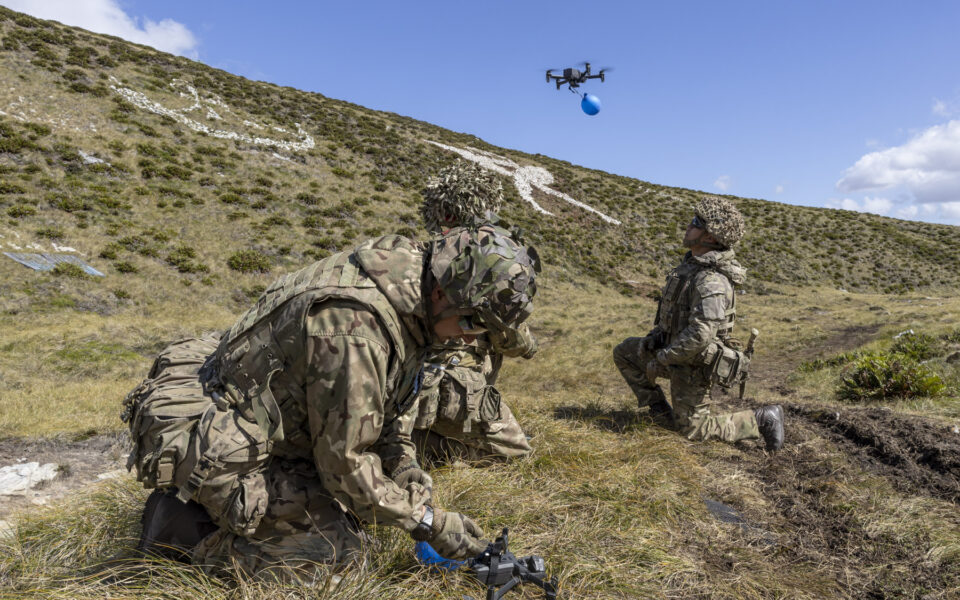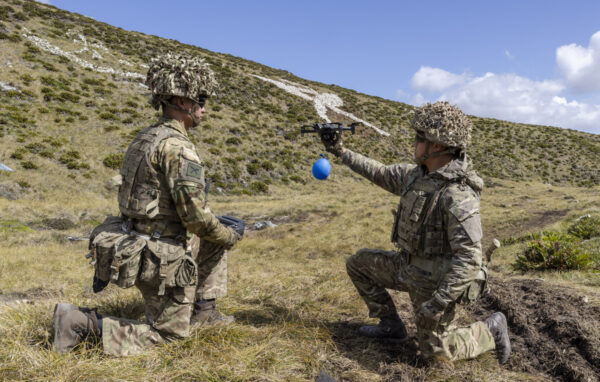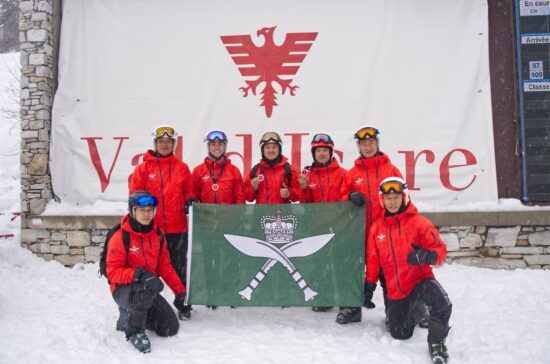The nature of war may never change, but the character of today’s warfare evolves by the hour – it is our job as professional Gurkha soldiers and officers, to stay ahead of the curve and remain ready. In this everchanging landscape of modern warfare, drones have become indispensable tools – with the war in Ukraine serving as a stark daily reminder that ‘war is the mother of all invention’. The proliferation of cheap, accessible, and lethal, small drones has redefined how wars are and will be fought, especially at the tactical level. Against this backdrop of change, Amboor Company, The Second Battalion, The Royal Gurkha Rifles (2 RGR), has been at the cutting edge of developing drone capabilities within the British Army.


Amboor Company recently returned from our FIRIC deployment to the Falkland Islands as part of the Roulement Infantry Company. During training exercises whilst deployed, Amboor Company deployed the Parrot Anafi drone as an organic Intelligence, Surveillance, Target Acquisition, and Reconnaissance (ISTAR) asset at the Section, Platoon and Company levels. Lightweight, silent, and rapidly deployable, the Anafi has proven to be a vital asset for dismounted operations. Its standout feature – a thermal imaging camera that has significantly enhanced our reconnaissance and night fighting capability.
From identifying enemy positions under the cover of darkness to maintaining eyes-on for flanking manoeuvres, the Anafi has become an integral part of our planning and tactical proficiency.
In a significant milestone, Amboor Company became the first Field Army sub-unit to receive Military Aviation Authority dispensation to conduct aerial drops using drones in a training environment. Using a radio-controlled dropper device mounted on the Anafi drone, soldiers were able to drop simulated munitions – including tennis balls and water balloons onto simulated enemy positions. These tennis balls and water balloons of course served as training surrogates for grenades and small air-dropped explosives – exposing our troops to the challenges of operating with and against small drones whilst remaining in a safe training environment. Our use of the Anafi Parrot in this strike role proved its potential as more than just a reconnaissance tool – but as a battle winning asset.
One of the most exciting developments has been the creation of the Hunter-Killer drone team. This concept revolves around a four-man team tasked with finding, fixing, and striking enemy forces using various types of drones. Working in coordination, the team firstly operates an observation drone to identify threats, while others manoeuvre armed or drop-capable drones to fix or destroy the target. Our ISTAR and strike capabilities into a single agile team has introduced a new level of tactical flexibility – enhancing classic infantry tactics with cutting-edge technology.
War may be the mother of all invention but perhaps sports and competition are the father Recognising talent, Amboor Company selected several Gurkha soldiers from within the company to begin integrating First Person View (FPV) drones into our training exercises. Having already honed their skills through Army FPV drone racing competitions, and with proven lightning-fast reflexes, FPV pilots such as Lance Corporal Bishal Rai are the epitome of the ‘Modern Gurkha’. FPV drones, known for their speed and agility, have introduced an exciting and highly dynamic element of reconnaissance, strike, and even mock attack runs to our training exercises. In the hands of our skilled Gurkha pilots, FPV drones offer a glimpse into the fast-paced, tech-savvy future of combat.


As the British Army adapts to emerging threats and technologies, Amboor Company’s work with small drones represents a blueprint for success. By combining ingenuity, initiative, and the unique talents of Gurkha soldiers, 2 RGR continues to set the standard. From simulated strike drones to tactical drone teams and cutting-edge FPV pilots, the skies over the battlefield are no longer empty – and the Gurkhas are leading the way.





